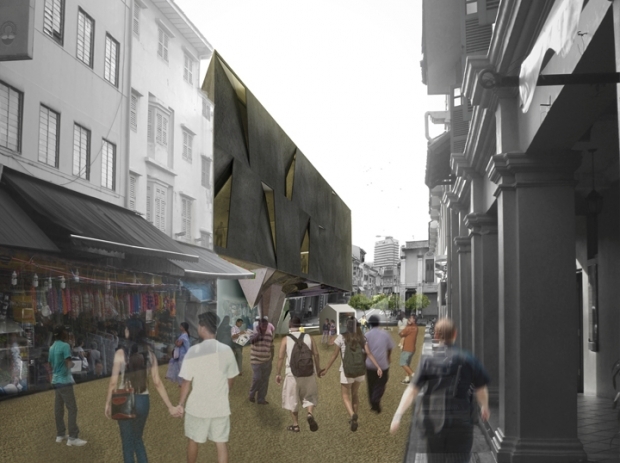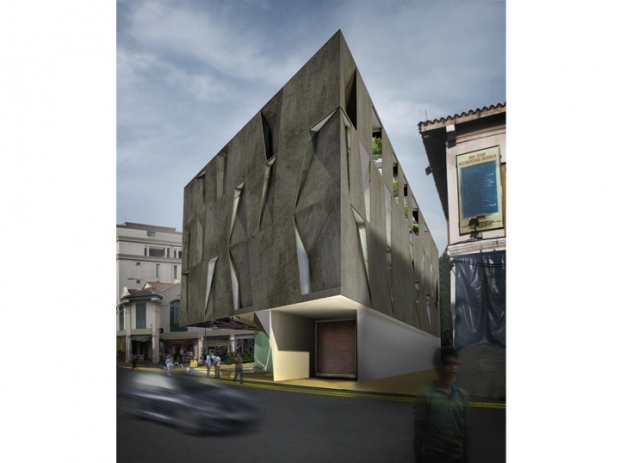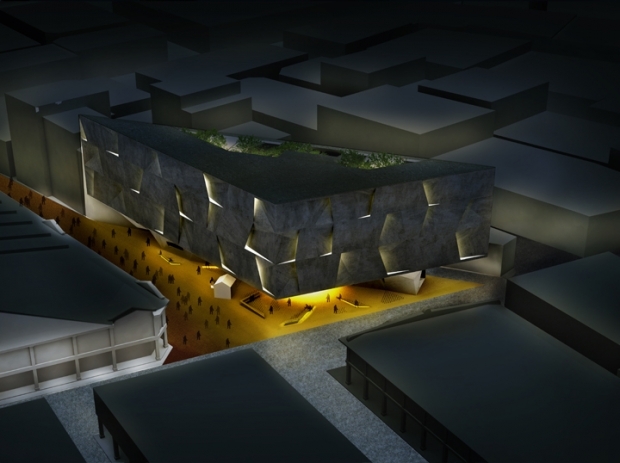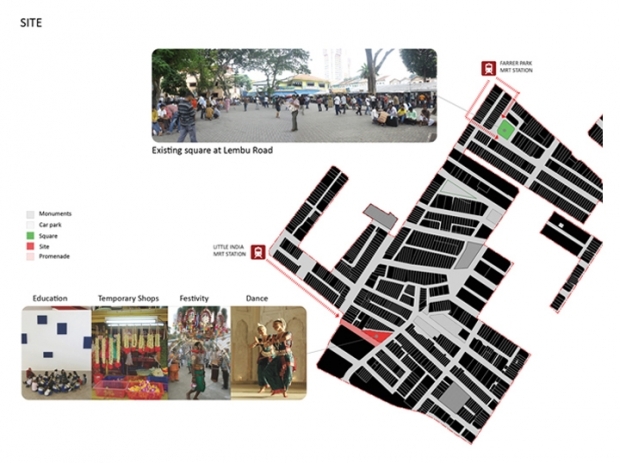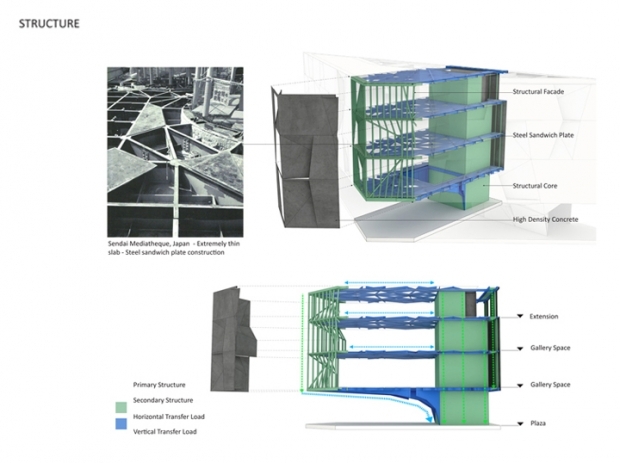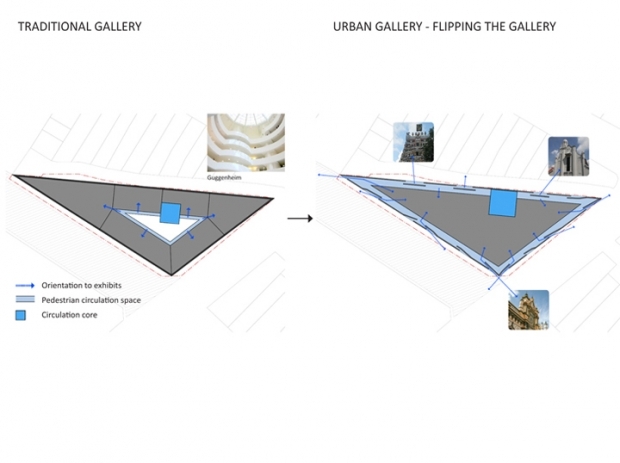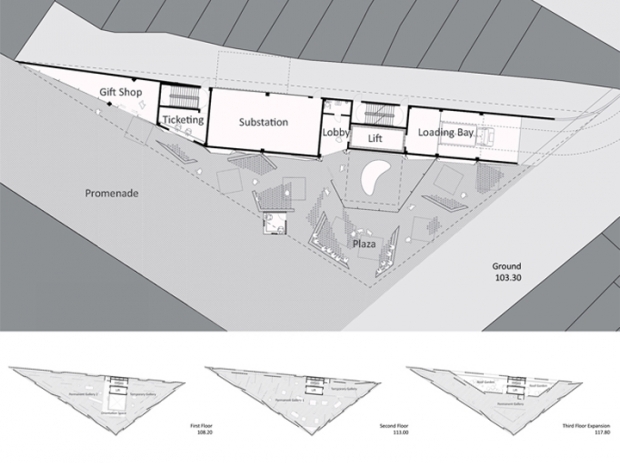Indian Heritage Center, Singapore, 2011
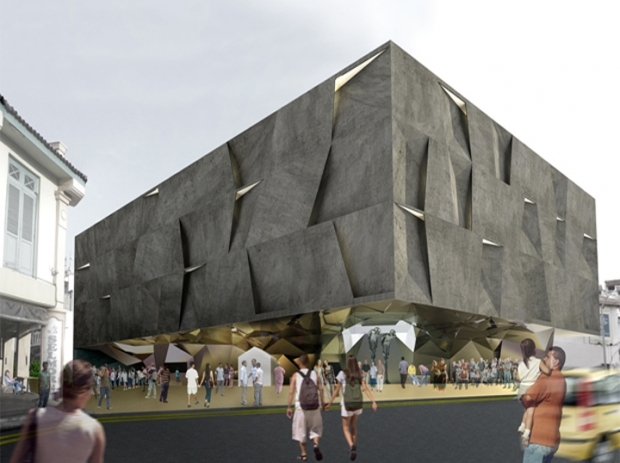
Fact Sheet
Project:
Indian Heritage Center, Singapore, 2011Status:
COMPETITIONClient:
NATIONAL HERITAGE BOARD, SINGAPOREBudget:
SGD 12 MILLIONSite:
CLIVE STREET, LITTLE INDIA CONSERVATION AREA, SINGAPORE ; SITE AREA / GROSS FLOOR AREA: 815.7 m2 / 3010 m2Program:
MUSEUM, GALLERY, RETAILCredits
Partners in charge:
-Team:
-Collaborators
Structure:
N/ASustainability:
N/AMEP:
N/ACost analysis:
N/AThe narrow and labyrinthine streets of Little India are well known to Singaporeans and tourists for its bustling street life and its dense array of colonial shop-houses. Little India exhibits an unusual condition that is in stark contrasts with most areas in Singapore - The streets are always streamed with pedestrians despite heavy vehicular congestions all year round.
Any meagre open spaces within the dense fabric of Little India are not only inevitable refuge areas for pedestrians to mingle and interact but they are also important resources for tenants and occupants to organise temporary events and activities. Unfortunately, at present, there is only one formalised open space along Lembu Road at the Northern end of the Little India Conservation Area. The site for the new Indian Heritage Centre has however been used frequently for special festivities and bazaars.
With URA’s initiative of transforming Cambell Lane into a pedestrianised promenade there is an opportunity to extend the promenade into an urban plaza through the design of the Indian Heritage Centre to not only facilitate present and future cultural activities but also to create a formal “Southern Entrance Plaza” to Little India.
The plaza is created by minimising the building’s footprint on ground floor and pushing all supporting facilities of the IHC underground, thus maximising public access and continuity of activities from the promenade.
LITTLE INDIA AS ARTEFACT
The Indian Heritage Centre (IHC) should not only be a museum that exhibits historical artefacts but also a platform in which to fully express and introduce the achievements of Indians living in Singapore. Little India is in itself an urban artefact that represents these achievements and should be incorporated into the design of the IHC as a live exhibit.
FLIPPING THE GALLERY
To allow for the viewing of this urban artefact of, Little India, the atrium circulation of the traditional gallery is pushed to the envelope – flipping the model from an introverted gallery to an outward-looking model. The façade is then peeled and overlapped to create views to important landmarks while diffusing day light entering the gallery.
STRUCTURE
To achieve the openness of a plaza, the gallery is lifted, “floating” above ground to express the lightness of canopies. The superstructure of the IHC is designed as a steel structure. The gallery is lifted with the use of cantilevered trusses and cross bracing trusses supported by a linear service/core structure abutting the service lane to the North of the site.
“Steel Sandwich Plates” serve as floor plates allowing an even weight distribution to the vertical service structures while reducing the slab thicknesses. The steel frame façade forms the secondary vertical structures, transferring the loads of the building to the main trusses while hanging the external cladding made of thin sheets of high density concrete.




